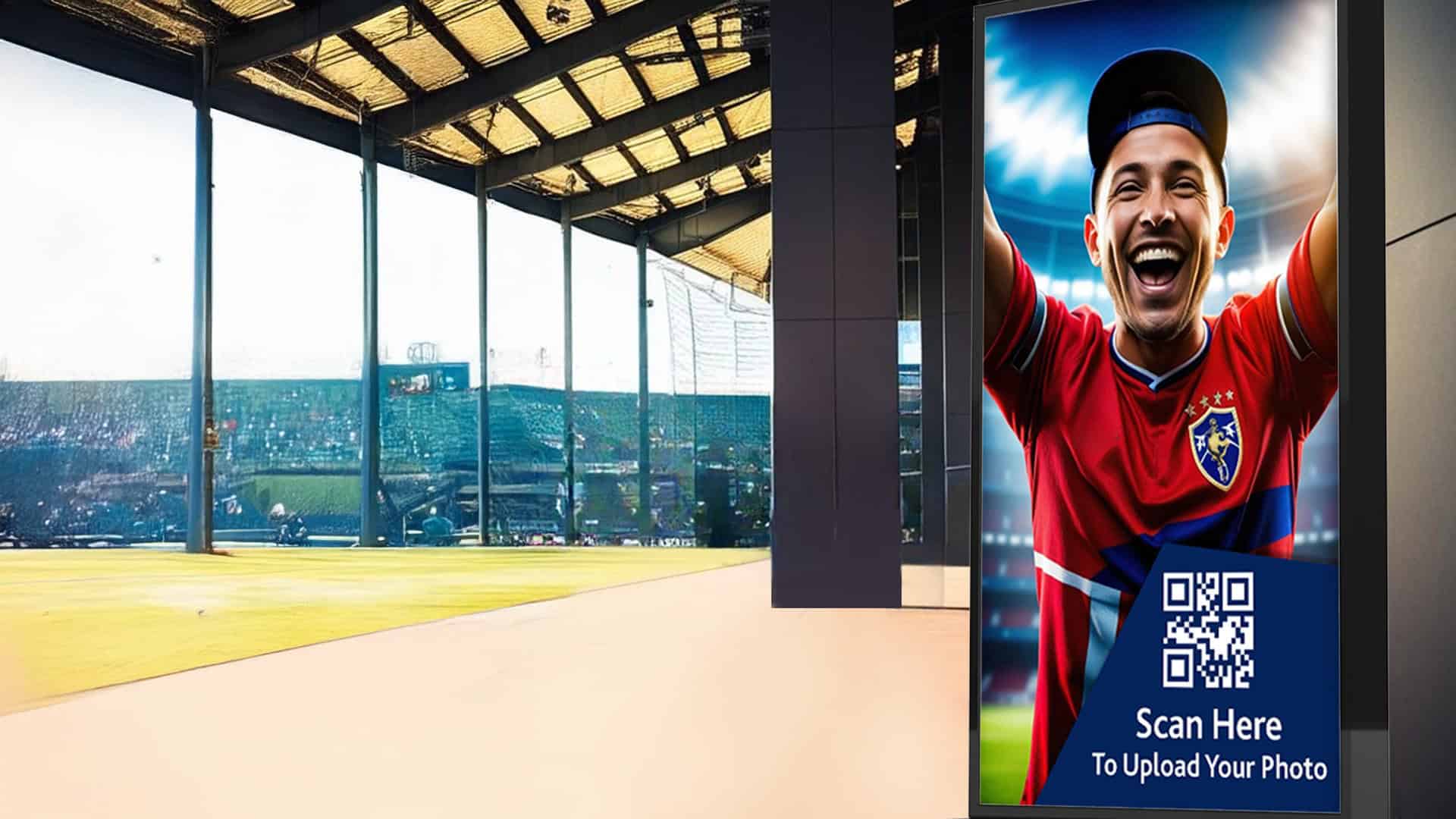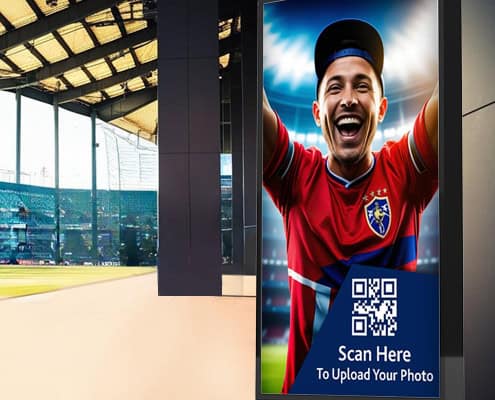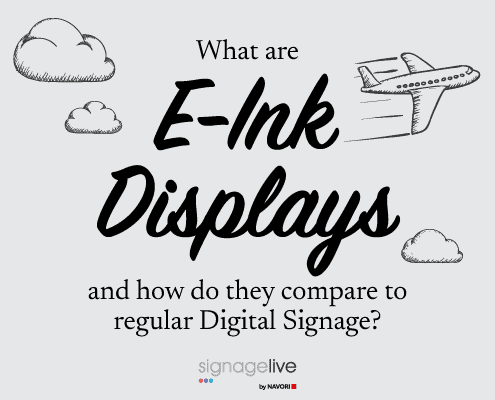
Are you struggling to figure out exactly the right brightness levels for your digital signage screens?
The good news is that you can save time and skip all the trial and error by following a simple rule of thumb. For indoor digital signage, a digital signage screen’s brightness in nits (cd/m²) should be at least double the ambient light’s illuminance in lux. For example, in a typical indoor living space, where the lighting measures around 200-250 lux, you would need a screen brightness of 500 nits.
Read on to find out how displays’ brightness levels should be adjusted, based on ambient lighting and location, and the screen technology used.
How does location affect screen brightness?
The brightness of your digital signage screens will depend first and foremost on the ambient lighting of the installation location. The harsher the artificial light, or the sunnier the environment, the higher the brightness levels required.
Whatever you do, always consider the lighting implications before you select a digital signage display. While most displays enable you to adjust brightness levels, this is only within a very limited range.
Without the right screen brightness levels, your digital signage won’t perform as it should. Even the best, highest resolution content will fail to engage. Think of how poor the on-screen content would look with:
- Illegible messaging
- Washed out colours
- Reflections
Which Locations Require Higher Digital Signage Screen Brightness?
Window-facing Displays
Brightness level: 1000-2500nits
Think store-front window displays, or harshly lit environments like retail changing rooms. A combination of light and reflective surfaces can entirely fade out the screen.
To prevent this from happening and ensure perfect readability, you’ll need digital signage screens with higher nit levels, from 1000-2500nits.
Examples of window-facing applications include:
- Shopfront windows
- Shopping malls with glass atriums or skylights
- Corporate lobbies with floor-to-ceiling windows
- Exhibition halls and trade shows
- Airport terminals
- Hospital waiting areas or atriums
- University or library atriums
- Stadium or arena concourses
What Brightness Levels Do You Need for Outdoor Digital Signage?
Brightness Level: 2,000 – 4,000+nits
Subject to full sun exposure, outdoor displays require the highest level of nits – anywhere from 2,000 – 4,000+nits.
What other Digital Signage Features can Help Set the Right Screen Brightness?
Anti-glare Properties
Digital signage displays with anti-glare properties ensure low screen reflectivity – less than 2%.
Ambient Light Sensors and Auto Brightness
Consider investing in digital signage displays that measure the level of light, and automatically adjust the screen brightness accordingly. This won’t just save you time, and ensure that your on-screen content stays visible. It will also save energy and ultimately help keep your running costs to a minimum.
What Brightness Levels Do Window Displays and Outdoor Signage Require at Night?
Brightness Level: 100 – 150nits
To cut down your energy consumption and stay compliant with local regulations about digital signage use at night, remember to either manually reduce your screens’ brightness levels, or set your screens to do so automatically.
Can the Type of Digital Display Affect Brightness Levels?
Yes! The screen technology can have an effect on the kind of brightness levels you can achieve.
LCD (with LED backlight) Displays
LCD displays offer good brightness levels, making them suitable for both indoor and outdoor signage.
LED (direct view):
These digital signage displays can offer exceptionally high brightness, so they’re ideal for large outdoor displays and sunlight readability.
OLED:
OLED displays have lower peak brightness, but superb contrast, which makes them best for use indoors, where the lighting’s controlled.
QLED (Quantum Dot LCD):
Providing higher brightness and more vivid colours than standard LCD screens, QLED displays are perfect for bright indoor or semi-outdoor use.
Signagelive digital signage software offers seamless compatibility with a vast range of hardware and from the biggest global brands. Find out how we can help streamline content management, and boost engagement with our intuitive cloud-based solution. Reach out today!
FAQ Summary on Digital Signage Screen Brightness
1. What brightness should indoor digital signage screens have?
Indoor screens should be at least double the ambient lighting in lux. For most spaces, this means around 500 nits.
2. How bright should window-facing displays be?
Display-facing windows or reflective areas need 1,000–2,500 nits to remain readable and prevent washed-out content.
3. What brightness is required for outdoor digital signage?
Outdoor screens exposed to full sunlight require 2,000–4,000+ nits for clarity and visibility.
4. Should digital signage screens have auto-brightness sensors?
Yes — ambient light sensors automatically adjust brightness, keeping content visible, reducing energy use, and complying with night-time regulations.
5. Can the type of display affect brightness levels?
Yes — LED and QLED screens achieve high brightness for bright or outdoor conditions, while OLED excels indoors with controlled lighting due to its superior contrast.
6. How should screen brightness be adjusted at night?
Night-time brightness should be lowered to 100–150 nits to save energy and follow local regulations.





You must be logged in to post a comment.